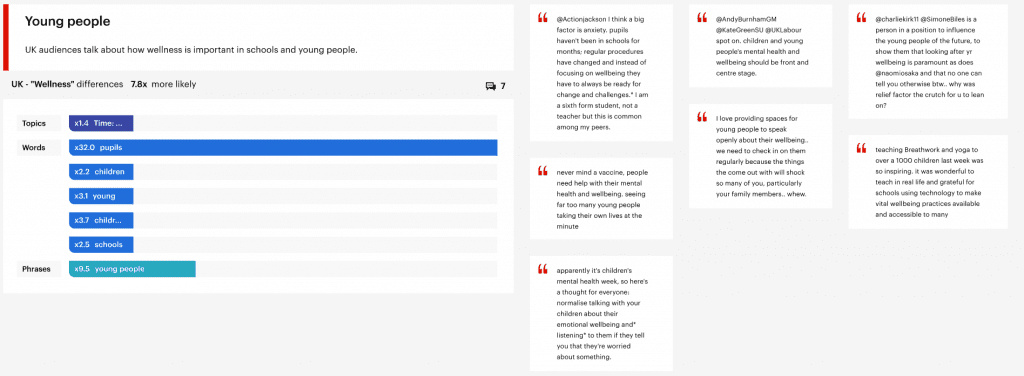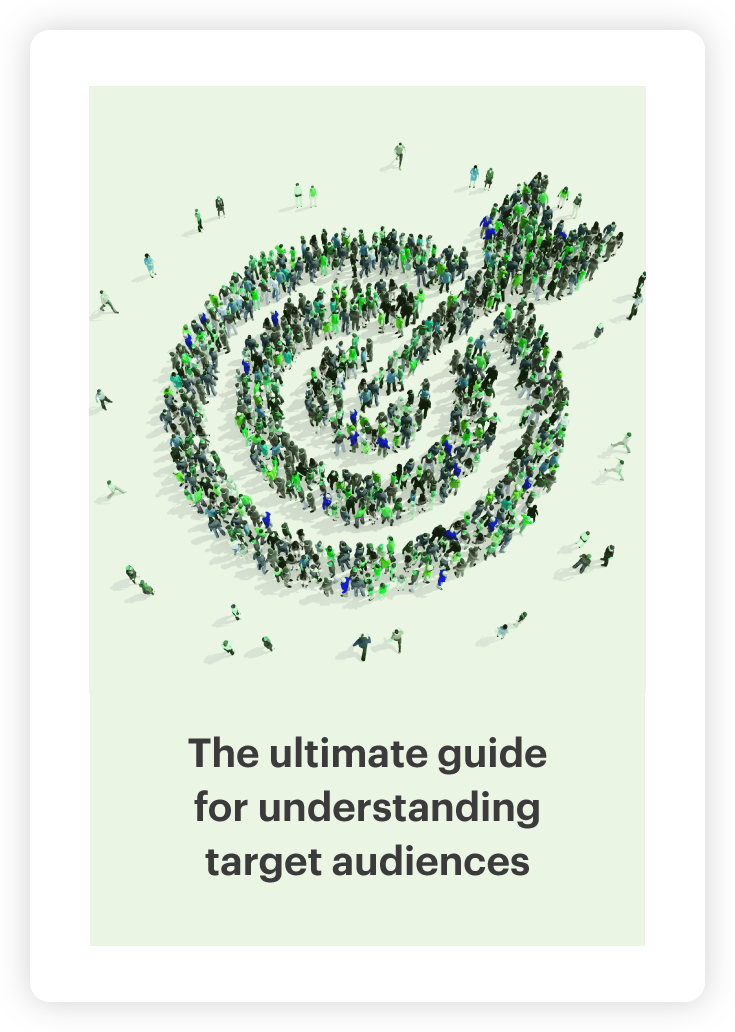Marketing health and wellness: Understanding the differences between US and UK audiences

Whether you’re practising meditation, discussing the latest nutrition trends, or taking some well-earned “me” time to relax and unwind, the increase in people adopting a wellness-focused lifestyle has left the industry booming.
McKinsey estimate that the global wellness market is worth more than $1.5 trillion, with annual growth of 5 to 10 percent. But as more people embrace their inner truths and work to be the best version of themselves, the competition in wellness marketing continues to grow with brands vying for the consumer’s attention.
Marketeers are using Relative Insight to find new ways to reach their audience. By analysing social media conversations and the organic language used by their target audience, brands gain a deeper understanding of the consumers mindset and create more targeted health and wellness marketing strategies and products.
We wanted to explore the differences between the US and UK wellness markets, specifically from a consumer perspective. To do this, we used Relative Insight’s text analysis technology to compare how UK and US audiences are discussing the topic of “wellness” on social media. Relative Insight pinpoints the linguistic differences between two or more data sets. On closer look, this comparison revealed some clear cultural differences and surfaced the unique language and themes used by each consumer market.
US
Self-awareness
A key finding in our analysis was that Americans are much self-aware in their conversations on wellness and mental wellbeing. For instance, the use of first-person pronouns I and me appeared 1.9x more in this data set, suggesting that US audiences view wellness through the lens of their own personal experiences. We also found that Americans discuss their wellness journey and goals more so than Brits, highlighting the openness of this particular market and the idea that wellness is a journey with a definitive endpoint.


Wellness products
Another difference we uncovered was that Americans are 6x more likely to mention specific wellness products and the monetary cost of their wellbeing. Words such as products, supplements, planner and essential oils appeared throughout tweets, suggesting that American consumers are more likely to buy into wellness marketing. One user commented: “Pretty sure my wellness routine is the most expensive thing I own.” This could imply that the wellness industry is much more established in the US, and that Americans are happier to spend money on products that provide an apparent quick fix solution.


A self-care routine
Self-care routines are part and parcel of wellness. In comparison to British consumers, Americans are more likely talk about their personal care, routine and plan on Twitter, with the phrase wellness routine appearing infinitely more. Brands marketing health and wellness products in the US should position themselves as enhancing the consumer’s self-care routine and create supporting comms around this.


Religious language and varying types of wellness
A cultural difference between American and British audiences was the use of religious language coinciding with the topic of wellness. US audiences use words such as God, spiritual, healing, prayers and praying in their tweets around wellness, highlighting the idea that wellness is often associated with religious belief – a key societal disparity between both markets.


As well as spiritual wellness, US consumers further dissect the category of wellness into various segments. This includes emotional, financial, sexual, holistic and student wellness to name a few. American audiences see wellness as various parts of a puzzle, aligning to create a bigger picture.
UK
Collective approach
In comparison to US audiences, Brits take a collective approach when it comes to discussions around wellness. This is evident through the greater use of plural pronouns such as we and our. By talking about wellness in an inclusive way, Brits suggest that improving wellbeing is something we strive towards as a community rather than an individual.


Exercise and the great outdoors
Whereas Americans are susceptible to wellness product marketing, this isn’t the case for British people. When discussing wellness, we found that Brits are 4.3x more likely to mention exercise and the benefits of cycling, running and sports. Moreover, people based in the UK were 6.4x more likely to align better mental health and wellness with the being outdoors, in green space or getting fresh air. Brits see wellness as a lifestyle choice, changing certain behaviours to improve their wellbeing rather than relying on products to do it for them.


Young people
Our analysis also revealed that people in the UK are 7.8x more likely to discuss the importance of wellness in young people, children and pupils. Whether they’re parents or not, British people show concern about younger generations, which could mean that wellness is viewed as an honest, accepted conversation from an earlier age in the UK. A sentiment which brands could tap into.


Workplace mental wellness
The importance of employee wellbeing has soared over recent years, with businesses recognising that looking after your workforce can ultimately result in commercial success.
In our analysis, we found that Brits were 15.3x more likely to speak about wellness in relation to the workplace. There was a significantly higher use of words and phrases such as staff wellbeing, improve employee wellbeing, teamwork and staff morale. Whereas Americans view wellness as an individual narrative, it seems that Brits are more likely to care about initiatives being put in place to support the wellbeing of others.


While the world is shifting toward a more transparent (and healthier) mindset, the way audiences talk about “wellness” differs across locations. It’s important for brands to firstly understand the changing dialogue around mental health awareness and wellbeing, and secondly find resonant health and wellness marketing strategies for different audiences.
Don’t miss our next Spotlight Series event, where we will discuss all things mental health and wellness. With an stellar line-up of guest speakers and panelists, we’ll be talking about the constantly evolving language around mental health and what this means for brands and agencies.

